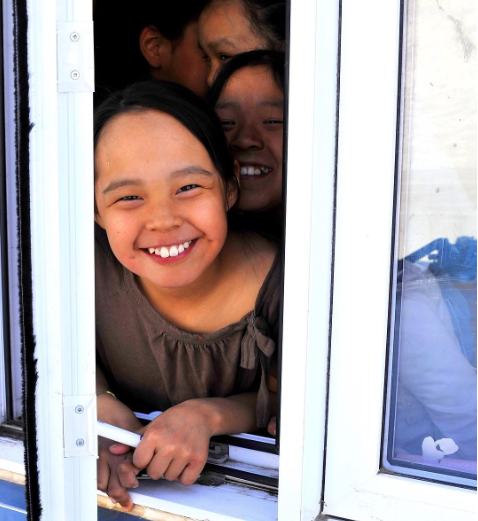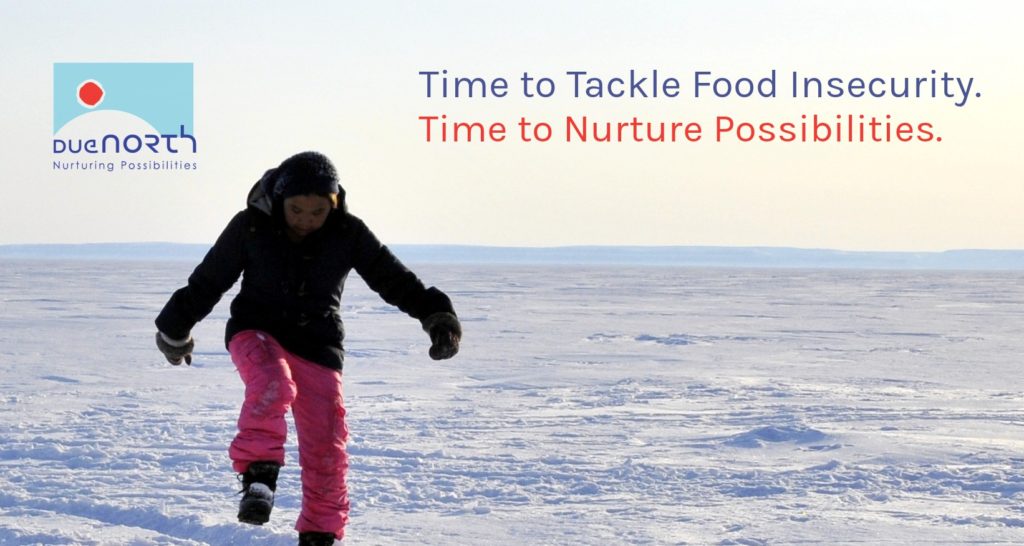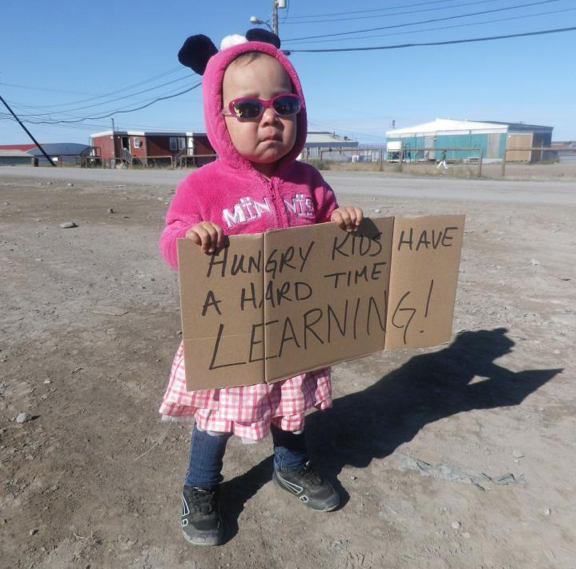When I was in the fifth grade, my teacher started a pen pal program between our little class in Ontario and a class of children living in Nunavut. Back then, I couldn’t understand why it took so long for our letters to be sent and received. I didn’t understand why my pen pal didn’t recognize some of the food, television shows, and animals I mentioned in my letters.
As young girls of the same age, I thought that our lives were exactly the same – although to me, living so far north seemed way cooler than my small town in the middle of nowhere. As I got older, however, the realities of my penpal’s life started to become a lot clearer.

Photo courtesy of @duenorthcanada on Instagram
I might affectionately say that I live in the Great White North, but Ontario is nothing compared to the climate of Nunavut, Canada’s northernmost territory.
There are a lot of problems that come with Nunavut’s harsh conditions, and the issue of food insecurity is one that more people need to be talking about.
Imagine what your eating habits would look like if a bell pepper cost $12. Crazy, right? Now imagine that a carton of orange juice costs $15. A box of cereal costs $11 – on sale. Even water, one of life’s most basic necessities, can cost over $100 per case. That is, if there’s even any stock on the shelves.
To most of us, this seems like an unrealistic nightmare. In Nunavut, this is the reality.

Photo courtesy of @duenorthcanada on Instagram
Nunavut is the only province or territory inaccessible to the rest of Canada by highway. Food often has to be flown in, driving up the price of transportation by a considerable amount. After the long journey, the produce that does reach Nunavut is usually bruised, wilted or expired. Processed foods high in sugar and low in nutrients are often a more realistic option (although not any cheaper), leading to increased rates of obesity and diabetes.
In the past, many citizens of Nunavut relied on hunting and fishing to provide immediate, nutritious food. With climate change, populations of animals are dwindling, and some are changing their habitats and migratory patterns due to the changing environment. Hunting and fishing are no longer a consistent option, meaning that residents of Nunavut have to rely on what little is available in grocery stores.

Photo courtesy of DueNORTH on Facebook
To a lot of us, this problem is something we don’t even think about. To Eva von Jagow, founder of the recently launched non-profit organization DueNORTH Canada, it’s something she thinks about daily.
“In Canada, one of the world’s wealthiest countries, no mother should feel like feeding their child is forced poverty,” she said in a heartfelt launch post. “Healthy food is the basis for a healthy life, and when this, a basic human right, is lacking, that is when high rates [of] diabetes, obesity and low-self esteem, amongst other conditions start to soar.”

Photo courtesy of Feeding My Family on Facebook
The impossibility of a balanced diet has a critical effect on Nunavut’s youth. School is hard enough on a full stomach, and yet for many kids in the north, learning on an empty stomach is the reality. That’s why DueNORTH’s main goal in raising funds is to provide nutritious breakfasts to children in Nunavut’s schools. So far, over $80,000 CAD has gone to establishing a daily hot breakfast program at a school in Coral Harbour, Nunavut, but DueNORTH’s work is far from done.
Food insecurity is a prominent problem in Canada’s north, and yet it’s one that isn’t talked about nearly enough. It’s time to start a conversation and help the residents of Nunavut access a necessity that we so often take for granted.




